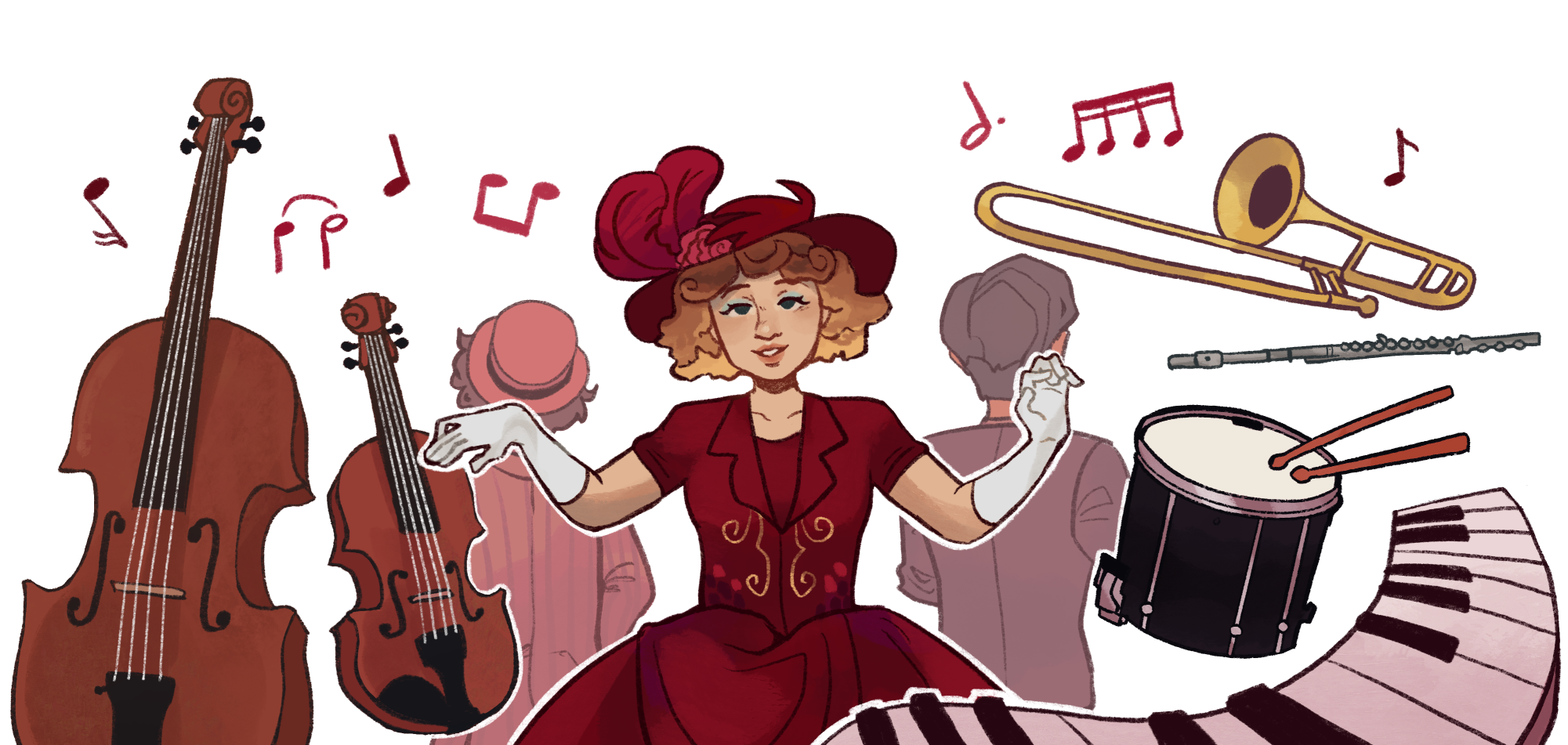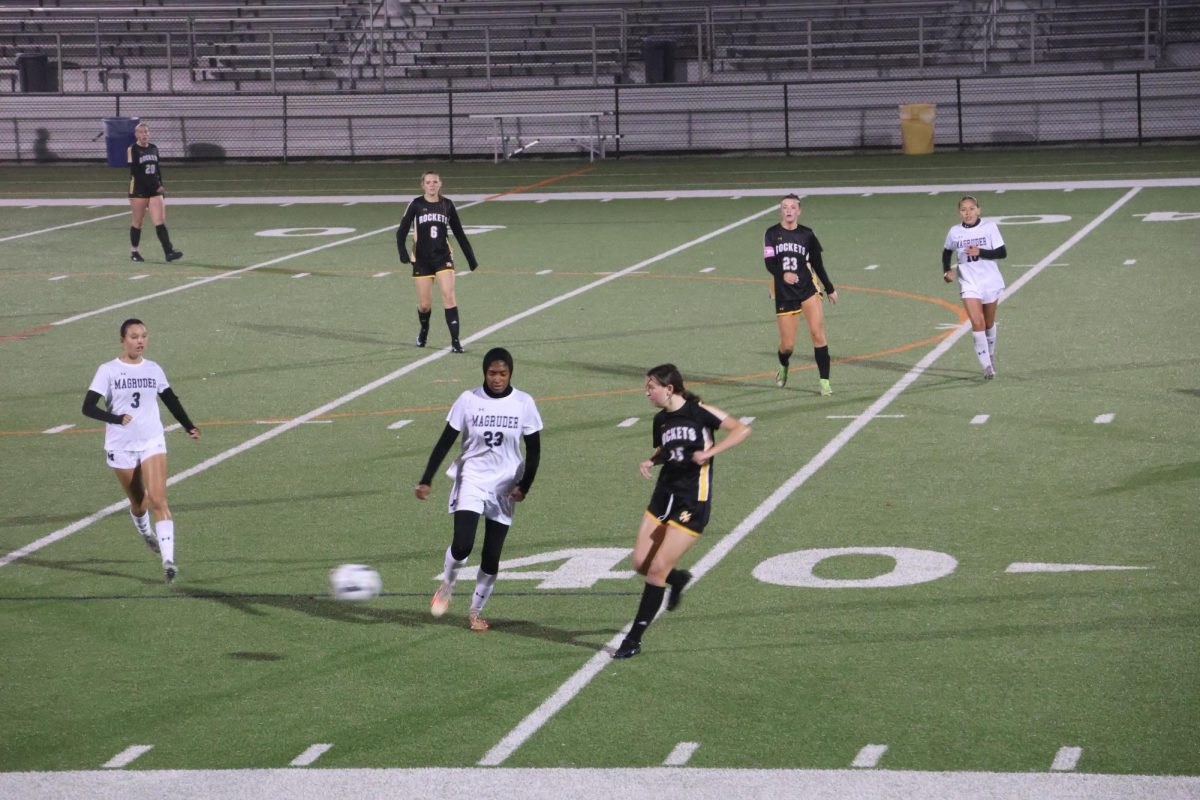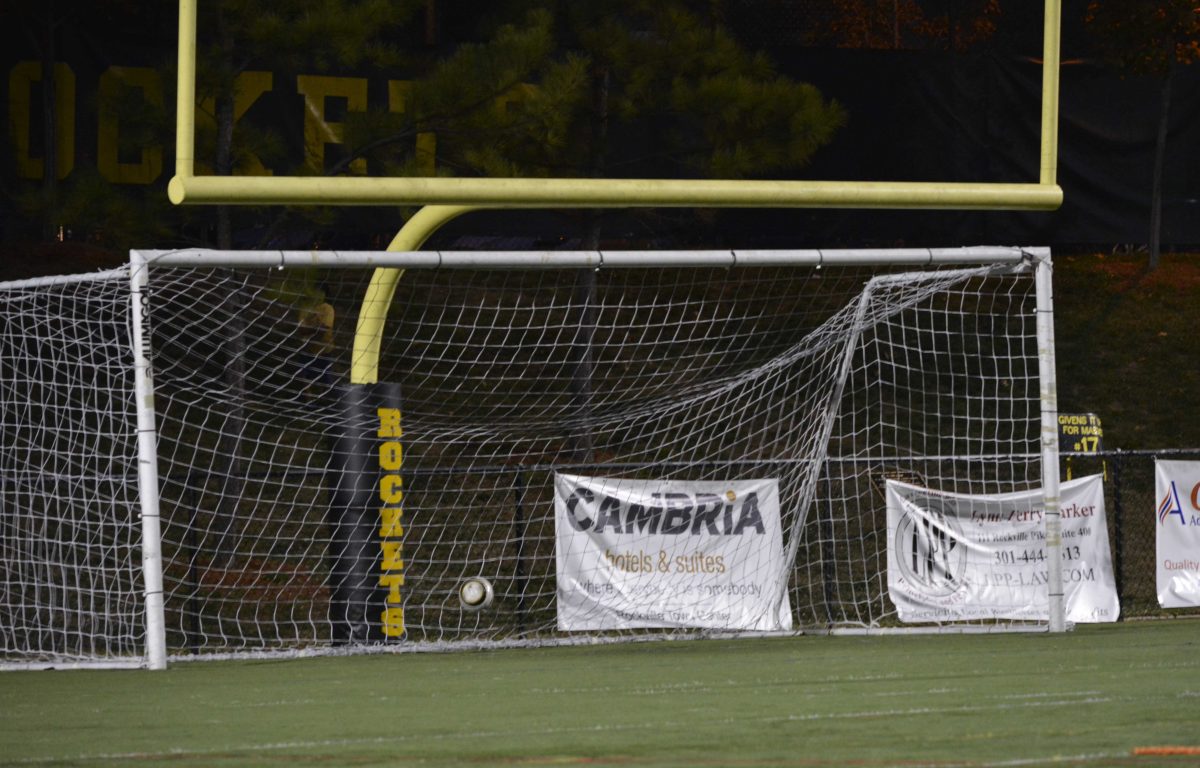Preparations for this year’s musical, “Hello Dolly,” are currently underway. As the cast memorizes lines and learns dance steps, and the stage crew builds the set and plans costumes, there is a third group hard at work in the music hall.
The pit orchestra, referred to as just ‘pit’ by the Black Maskers, is often overlooked when it comes to RM’s musicals. They sit below the stage and play live music to accompany the actors during songs. They also play overtures before and after the actors are on stage.
Peter Perry, the instrumental music director, has led the pit orchestra through 27 musicals at RM.
“People have a high expectation that we will make the musical sound as professional as we can. The pit musicians put in a lot of time,” he said.
There is an incredible amount of hard work that goes into the pit orchestra, beginning with auditions. This year, Dr. Perry held auditions in late September. To audition, students sight-read an excerpt from the score on the spot. Dr. Perry then makes decisions based not only on the musicians’ talent, but also on the combination of instruments required for that year’s particular musical.
“‘Hello Dolly’ is a more traditionally orchestrated show so it depends more on the acoustic instruments rather than on the synthesized instruments,” Dr. Perry said.
“Hello Dolly” was first performed in 1964. It is part of the Golden Age era of Broadway, which includes musicals like “The Sound of Music” and “West Side Story.” As a classic musical, the “Hello Dolly” score sounds different than what we are used to today.
“There’s something kind of nostalgic and charming about it,” senior Zaida Bowsher, who plays Dolly, said.
Dr. Perry believes in the importance of Golden Age musicals like “Hello Dolly” to musical theater today.
“You don’t have new shows like ‘Hamilton’ or anything else that’s out there now that doesn’t go back to these very, very important pieces of musical theater,” he said. “They’re important pieces of our culture, and if we don’t participate in them and experience them, we’re doing a disservice to musical theater.”
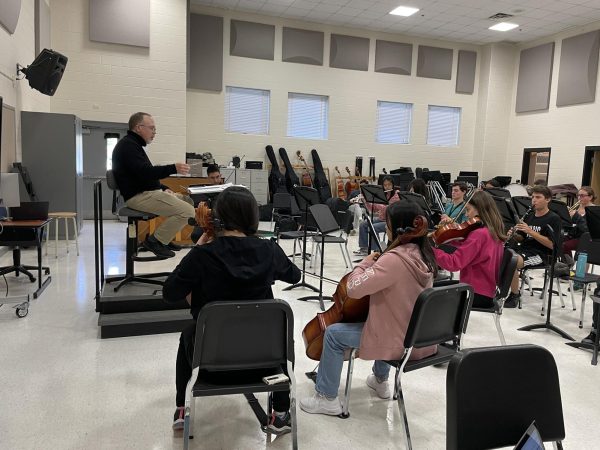
After the pit roster is decided, the orchestra begins rehearsing during lunch four to five times a week. Because they have a lot of music and a minimal amount of time to prepare, Dr. Perry emphasizes that musicians should practice outside of class and come to rehearsal with their parts prepared.
“We’re trying to just get all the notes right and sync it up with the singers,” senior Evelyn Cooper said, who plays both viola and violin for the pit orchestra. “Because we’re not necessarily the main performance, it doesn’t quite matter as much about our individual shaping and musicality.”
About three weeks before the first show, pit goes from lunch rehearsals to after-school rehearsals, at which they practice with the cast. They begin with a sitzprobe, or sing-through, in which the actors and orchestra perform the songs together for the first time. This year’s first sitzprobe was held on Oct. 26.
The sitzprobes are one of the most difficult and stressful parts of putting a musical together.
“It’s definitely a steep learning curve…you have two parts that have been on their own paths until now suddenly put on the same track,” Bowsher said. “Sometimes actors don’t sing the way pit expects them to. Sometimes pit doesn’t play the way actors expect them to. So it’s a lot of quick collaboration.”
Sitzprobes often happen before the orchestra and cast members feel fully confident with their music, adding to the stress.
“It’s definitely scary, because we don’t necessarily know the music 100 percent,” Cooper said. “But I think once we get more confident playing with [the cast], it can be fun to actually hear the melody because a lot of the time we’re just playing the accompaniment.”
For Dr. Perry, the focus during sitzprobes is on training the cast members to respond to the orchestra and to trust him.
“A lot of the cast in most cases do not have a whole lot of experience working with an orchestra… working with the conductor,” he said. “[We’re] developing that conductor-ensemble, conductor-actor relationship where the first place they can look for help is me.”
For five days before the first show, the actors, pit, and crew participate in tech week. Every day after school, they rehearse the show until 10:30 pm. Although the long hours and stress about the upcoming performances are grueling, incredible progress is made during tech week to transform the show into a final product.
“It is incredible how much we can get done in those seven-and-a-half-hour rehearsals,” Bowsher said. “When you put in 35-40 hours of work into something, you can see it.”
“Hello Dolly’s” show nights are on Nov. 10, 11, 17 and 18 at 7 p.m. On show nights, the excitement is high, but so are the nerves.
“In rehearsals we stop if there’s a problem but we know on a show night we can’t stop,” Cooper said.
With 27 musicals under his belt, Dr. Perry has some experience with these kinds of situations.
“One time the power went out. We were actually in the midst of some scene change music; that scene change music lasted a lot longer than it should be,” he said.
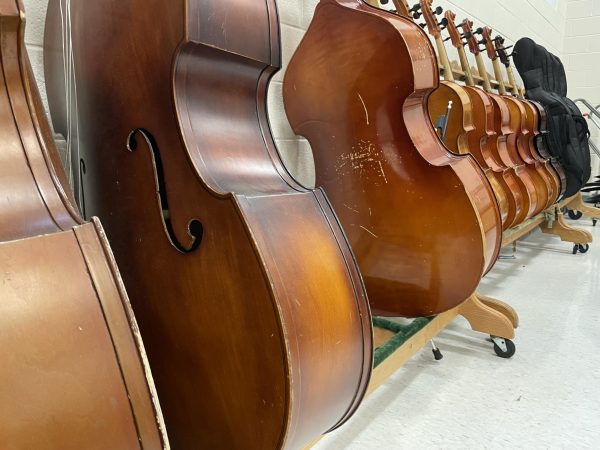
Some orchestra and cast members feel that these kinds of show night variances actually add to the quality of the musical.
“It’s definitely harder to sing with a live orchestra than to sing with a track because things can be different every night. It shows the audience that everyone in the cast and the orchestra is really talented and they know what they’re doing,” Cooper said.
From the actor’s perspective, Bowsher believes having a live orchestra enhances the musical, and credits Dr. Perry for his talent as a conductor.
“It also makes the production much more lively, because it’s not a computer behind this. The orchestra can change with the singers,” she said. “Dr. Perry is incredible about… using the pit to improve the singers.”
In the past, the pit orchestra has often been excluded from Black Maskers activities, but this has been changing recently.
“One of the things that we’ve been trying to do… is make sure all of the pit orchestra members are on the drama email list… so they can participate in the spirit weeks,” Cooper said.
In any musical, the actors get the most credit because they are who the audience sees. Although the pit orchestra is often overlooked, the truth is that they are essential to the musical.
“You don’t have a musical without the pit orchestra,” Dr. Perry said. “Without them it would just be another play.”

